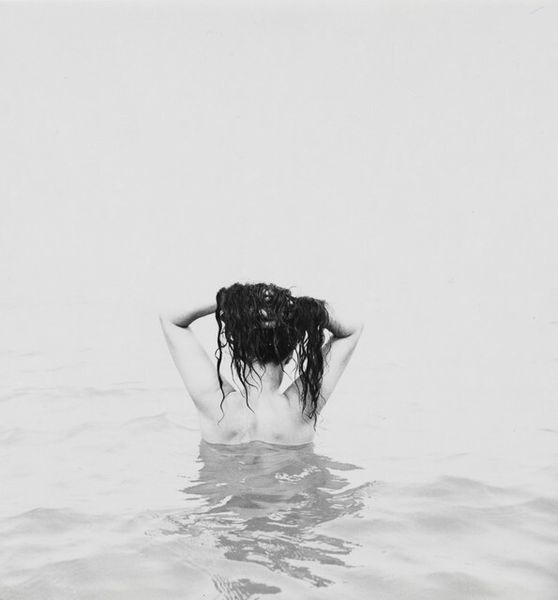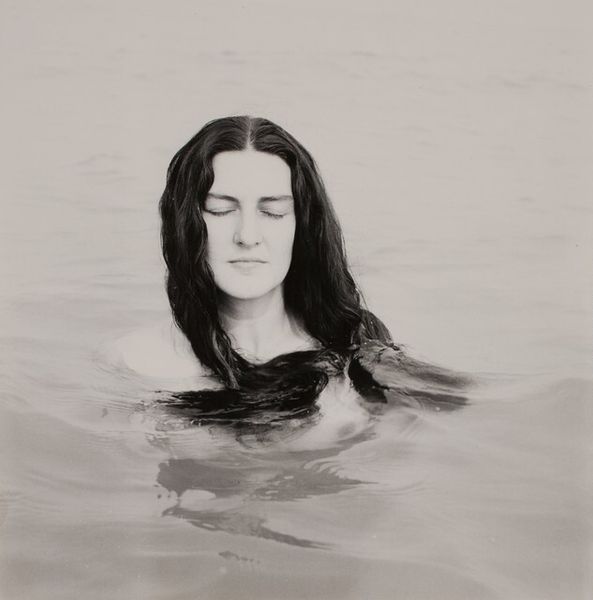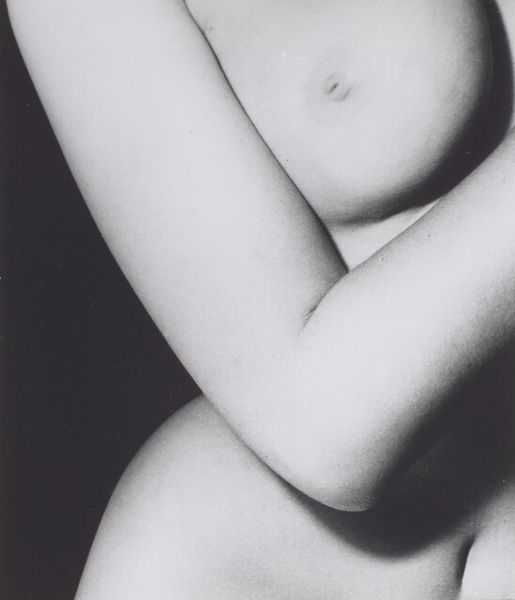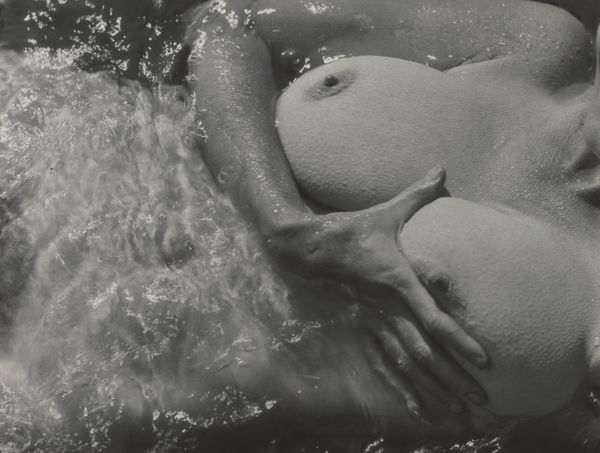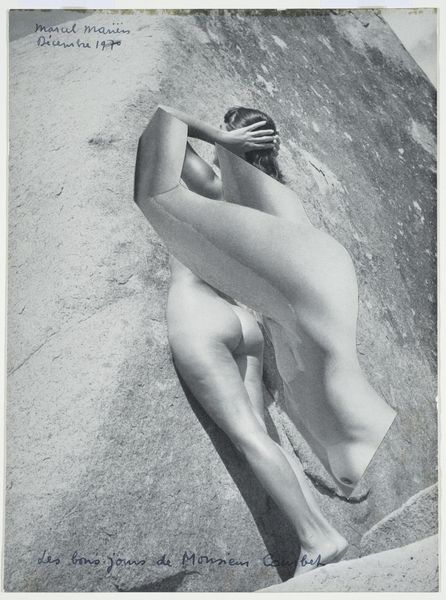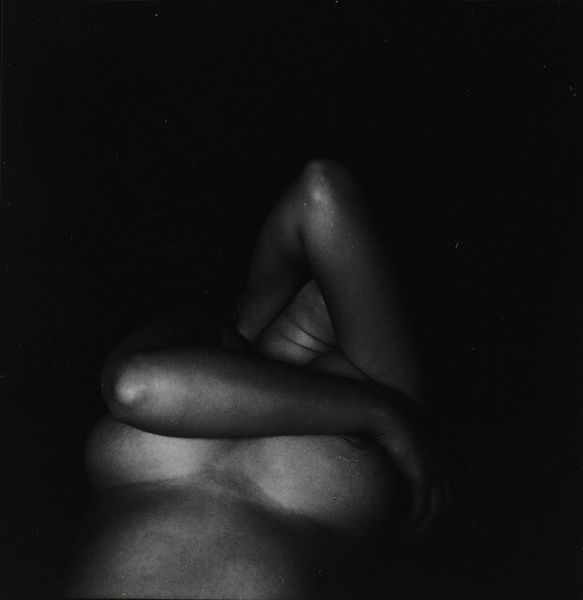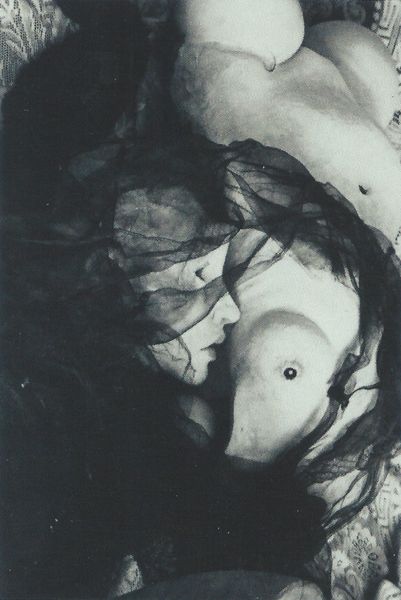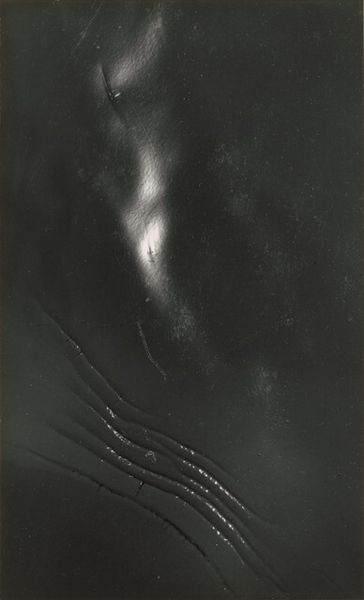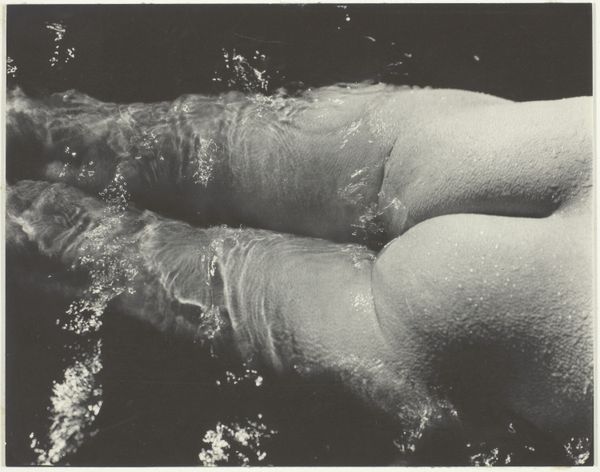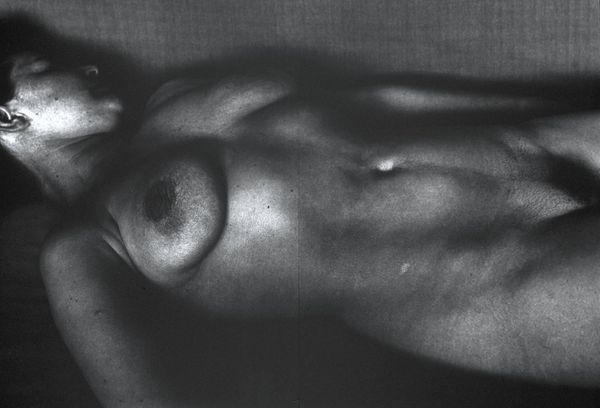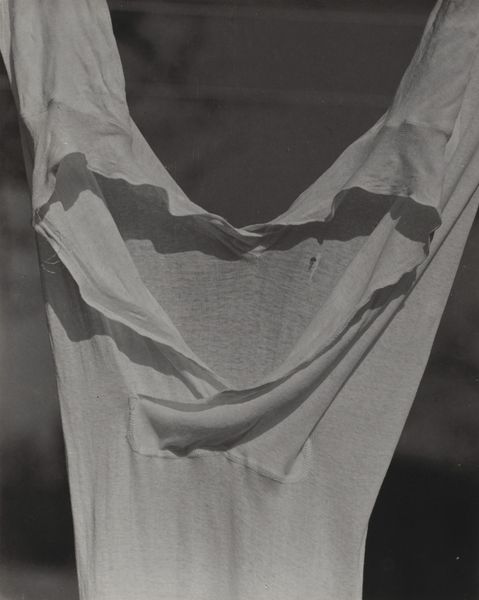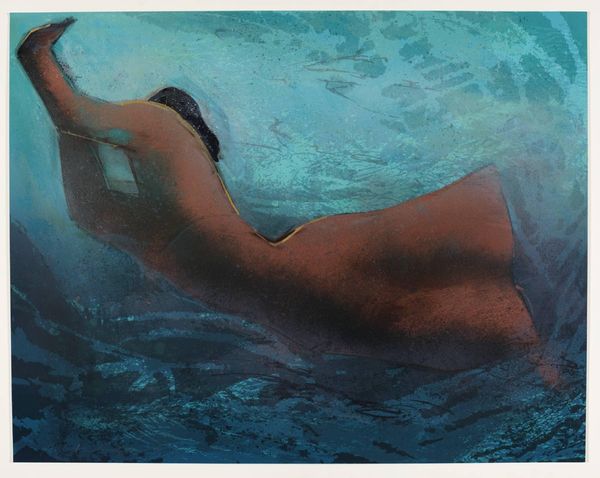
photography, gelatin-silver-print
#
portrait
#
abstract-expressionism
#
wedding photograph
#
black and white format
#
photography
#
black and white
#
gelatin-silver-print
#
nude
#
modernism
Dimensions: overall: 11.9 x 11.8 cm (4 11/16 x 4 5/8 in.)
Copyright: National Gallery of Art: CC0 1.0
Editor: We’re looking at Harry Callahan's "Eleanor, Chicago" from 1948, a gelatin silver print. It’s a close-up shot of a woman from behind, her head bent forward, and long wet hair obscuring her face. I find the image quite intimate, almost vulnerable. What strikes you about this piece? Curator: This photograph is a potent example of Callahan’s complex relationship with the female figure, particularly his wife, Eleanor. It's tempting to view it solely through a formalist lens, appreciating the textures and the play of light and shadow, but we need to consider the social and cultural context. What does it mean to display the female form in this way during the mid-20th century? Editor: That's interesting, I hadn’t thought about the context. It seems quite personal, but you’re right, there’s also a public dimension. How do you mean? Curator: Callahan photographed Eleanor extensively. These images raise questions about the power dynamics inherent in the act of photographing a subject, especially a spouse. He is in control of how she's seen, how she's framed. We can read the averted face, partially hidden by the hair, as suggestive of disempowerment, erasure even, in the patriarchal system of the time. Is it possible the framing emphasizes her objectification? Editor: I guess it’s not just a beautiful image then, but a loaded one. I’m wondering, could Callahan have been conscious of all these things when taking the shot, or is that something we bring to it now? Curator: Perhaps both are true. Artists create within their historical moment. Even if unintended, the image participates in ongoing dialogues about female representation, power, and the gaze. Looking at it now, through a contemporary lens, allows us to excavate these layers and challenge the dominant narratives. Editor: This has completely shifted my perception of the image. I thought it was about intimacy, but now I see so much more complexity. Thanks! Curator: Precisely, art invites continuous questioning. It is an ongoing dialogue between the artist, the work, and the viewer, shaped by the ever-evolving social landscape.
Comments
No comments
Be the first to comment and join the conversation on the ultimate creative platform.
